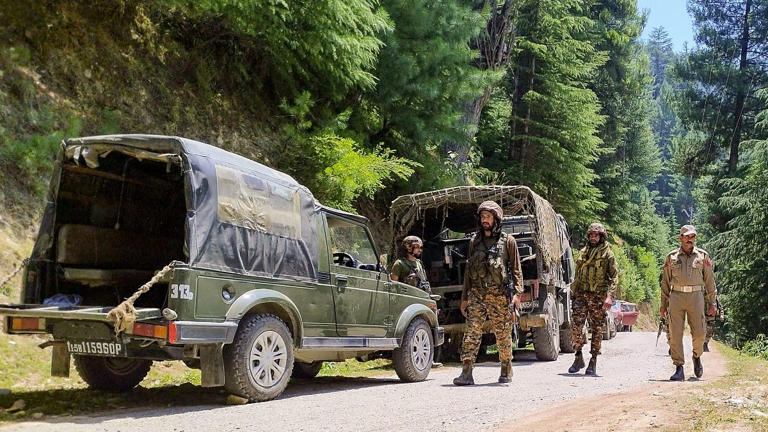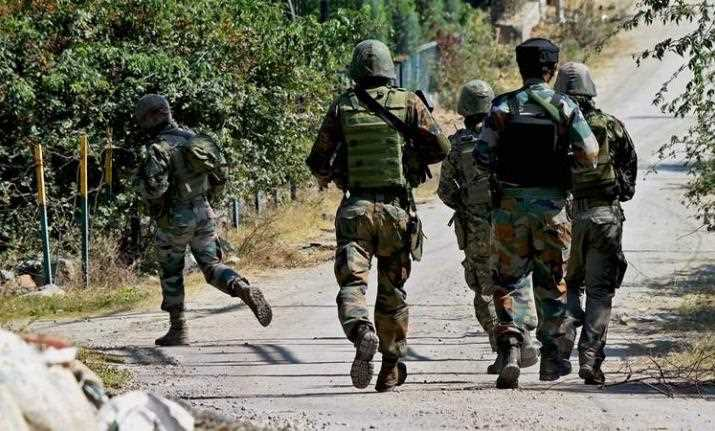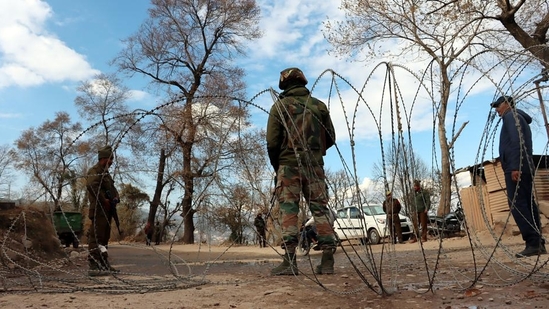
The serene beauty of Jammu and Kashmir often belies the turbulence that has marked the region for decades. Shopian, a district in South Kashmir, became the epicenter of an intense encounter between militants and security forces on [insert date]. The incident, which drew national and international attention, highlights the ongoing struggles in the region, raising critical questions about security, socio-political challenges, and the quest for peace. This blog delves deep into the encounter, its immediate consequences, and the broader implications for Jammu and Kashmir.
Prelude to the Encounter: Intelligence and Planning
In the days leading up to the encounter, intelligence agencies reportedly received credible information about the presence of militants in the Alshipora area of Shopian. This information triggered a carefully coordinated operation by the Indian Army, the Jammu and Kashmir Police, and the Central Reserve Police Force (CRPF). These forces worked together to cordon off the suspected area, initiating a search-and-surround strategy designed to minimize collateral damage.
The operation began in the early hours, with drones and surveillance equipment deployed to pinpoint the militants’ exact location. Despite the high-tech approach, the dense residential and agricultural landscape posed significant challenges, complicating efforts to locate and neutralize the threat swiftly.
The Encounter Unfolds
Gunfire erupted as the security forces closed in on the suspected hideout, marking the beginning of a tense and prolonged encounter. Local residents reported hearing heavy gunfire and explosions as the operation intensified. To ensure civilian safety, authorities imposed restrictions on movement, urging people to stay indoors and avoid the encounter zone.
The militants, believed to be part of a larger network, put up stiff resistance. The use of sophisticated weapons and knowledge of the terrain gave them an advantage, making the encounter a drawn-out affair. Despite these challenges, the security forces maintained their resolve, determined to bring the operation to a successful conclusion.
Impact on Local Communities
The encounter brought life in Shopian to a standstill. Schools, markets, and public services in the vicinity were shut down, affecting daily life and livelihoods. Families living near the encounter site were evacuated to safer locations, adding to the displacement and disruption already common in the region.
For the people of Shopian, encounters like this are a grim reminder of the region’s volatility. The psychological toll on residents, particularly children, cannot be overstated. The constant fear of violence and the sound of gunfire have become an unwelcome part of daily life, leaving deep scars on the community.
Historical Context of Militancy in Shopian
Shopian’s strategic location and challenging terrain have made it a hotbed of militant activity. Over the years, the district has witnessed numerous encounters, each contributing to its reputation as a conflict zone. The region’s history is intertwined with the broader struggle in Jammu and Kashmir, characterized by political unrest, socio-economic disparities, and the lure of militancy among disillusioned youth.
The late 1980s marked the beginning of large-scale militancy in the Valley, with Shopian emerging as a key area of activity. While government initiatives and military operations have aimed to curb militancy, the underlying issues remain unresolved, perpetuating a cycle of violence.
The Role of Security Forces
Security forces operating in Jammu and Kashmir face an incredibly challenging task. Balancing the need to neutralize threats while minimizing civilian casualties is a delicate and often thankless job. In the Shopian encounter, the forces demonstrated restraint and professionalism, ensuring that civilian safety remained a priority.
However, such operations often invite criticism. Human rights organizations have raised concerns about collateral damage, including property destruction and civilian casualties, during encounters. The security forces’ actions are scrutinized not only by local communities but also by national and international observers, adding pressure to an already complex situation.
Rising Trend of Local Militancy
One of the most concerning aspects of the ongoing conflict in Kashmir is the increasing involvement of local youth in militancy. The Shopian encounter underscores this trend, as many militants in the region are believed to be locals who have joined militant ranks in recent years.
Several factors contribute to this phenomenon. Unemployment, lack of opportunities, and political disillusionment are key drivers. Additionally, the pervasive narrative of victimization and the allure of martyrdom perpetuate the cycle of violence. Addressing these issues requires a multi-faceted approach, combining security measures with socio-economic initiatives.
Government Initiatives and Challenges
The government has launched various programs aimed at addressing the root causes of militancy. From skill development schemes to infrastructure projects, these initiatives aim to provide opportunities and improve the quality of life for people in Jammu and Kashmir. However, the impact of these programs has been limited, with many residents expressing skepticism about their effectiveness.

One of the significant challenges is the lack of trust between the government and the local population. Decades of conflict have created a deep sense of alienation, which cannot be bridged overnight. Confidence-building measures, including transparent governance and meaningful dialogue, are essential for fostering trust and ensuring the success of development initiatives.
International Ramifications
The encounter in Shopian is not just a local or national issue; it has international implications. The Kashmir conflict has long been a focal point of international attention, with various stakeholders expressing concerns about human rights and regional stability.
India’s handling of the situation in Jammu and Kashmir is often scrutinized on the global stage. While the government has consistently maintained that Kashmir is an integral part of India, international observers and organizations continue to monitor developments in the region closely. Incidents like the Shopian encounter underscore the complexity of the situation and the need for a comprehensive and sustainable solution.
Moving Towards Peace
The encounter in Shopian is a stark reminder of the challenges that lie ahead in achieving peace and stability in Jammu and Kashmir. While security operations are necessary to address immediate threats, they must be part of a broader strategy that addresses the underlying issues fueling the conflict.
Education, economic development, and political engagement are key components of this strategy. Providing opportunities for the youth, fostering dialogue between different stakeholders, and ensuring transparent governance are critical steps toward building trust and creating a peaceful future.
Conclusion
The encounter in Shopian highlights the persistent challenges faced by Jammu and Kashmir in its quest for peace. It is a microcosm of the broader conflict, reflecting the complexities and contradictions of the region. While the security forces work tirelessly to maintain stability, the road to lasting peace requires a collective effort from all stakeholders, including the government, local communities, and international organizations.
As Shopian returns to a semblance of normalcy, the hope remains that such incidents will become a thing of the past. The resilience of the people and the commitment of those working toward peace offer a glimmer of hope in an otherwise turbulent landscape. The journey is long, but it is one that must be undertaken with determination and a shared vision for a better future.

